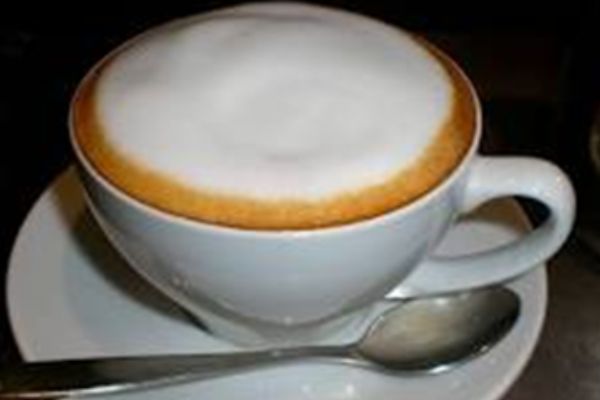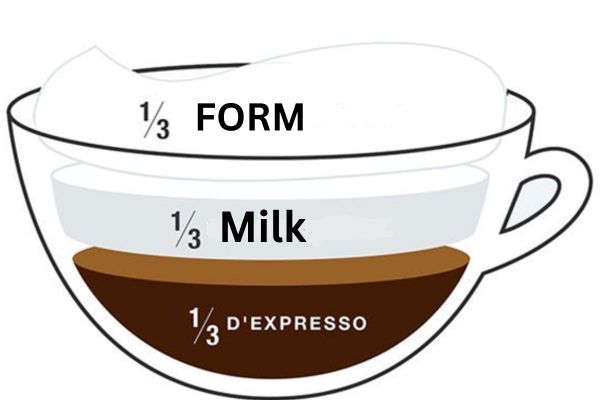With its intoxicating aroma and velvety texture, for almost everybody, the cappuccino is more than just a coffee drink. It’s a cultural icon for sure, a testament to Italian coffee mastery, and a journey through centuries of flavor evolution. So, let’s delve into the world of cappuccino, exploring its discovery and cappuccino recipe.
Table of Contents
Discovery:
The origins have yet to be definitively discovered, but it’s believed early versions of cappuccino were made by adding heated milk to shots of espresso. The proportions and preparation methods developed over time into what we now know as a traditional cappuccino.
We should know that the cappuccino wasn’t a single eureka moment but rather a gradual refinement of existing coffee traditions. The Viennese added milk to strong Turkish coffee, while Italians perfected the art of frothing milk with steam wands. You should know that the melding of these techniques birthed the cappuccino we know today.
The Cappuccino Recipe:

Ingredients that we need:
- 1 shot of espresso
- 1/3 cup of steamed milk
- 1/3 cup of frothed milk
- Cocoa powder or cinnamon (optional, for garnish)
Steps to prepare your cappuccino:
- First, you have to brew a shot of espresso using your preferred method.
- At the same time, you should steam the milk until it reaches a temperature of about 150°F (65°C).
- Please, froth the milk until it becomes creamy and has a thick, velvety texture.
- You ought to pour the shot of espresso into a coffee cup.
- While adding the steaming milk you should use a spoon to hold back the foam.
- Then, spoon the frothed milk on top.
- Optionally, you can choose to sprinkle cocoa powder or cinnamon on the foam for garnish. I like cocoa powder you choose yours.
- Please, serve immediately and enjoy before it gets cold.
How to Brew Perfect Cappuccino:
A perfect cappuccino is characterized by a balanced harmony of espresso, steamed milk, and froth. The espresso should be strong and rich, while the steamed milk contributes creaminess, and the froth adds a velvety texture.
To brew the perfect cappuccino, you need to start by brewing a shot of espresso using high-quality coffee beans. Then you should steam the milk until it reaches a temperature of about 150°F (65°C), creating a creamy texture. You have to make sure to froth the milk until it becomes thick and velvety. Pay special attention while doing this step, you might need to practice more to get perfection while pouring the espresso into a coffee cup, followed by the steamed milk, holding back the foam with a spoon. Spoon the frothed milk on top, creating a layer of creamy foam. Optionally, garnish with cocoa powder or cinnamon for added flavor.

It’s important to note that a classic cappuccino calls for equal parts espresso, steamed milk, and foam, and the quality of the foam is crucial to a good cappuccino.
What Results in Bad Cappuccino:
You have to understand that the weak cappuccino can be a sad reality. Here are some culprits:
Over-steamed milk: Milk that’s too hot loses its sweetness and becomes scalded.
Not enough espresso: The espresso provides the backbone of flavor. A weak shot can make the drink taste milky and bland.
Thin foam: Airy foam adds lightness and sweetness. Dense or nonexistent foam throws off the balance.
A weak cappuccino often results from insufficiently brewed espresso, too much milk, or inadequately frothed milk. Achieving the right balance is crucial for a well-rounded flavor.
Importance of Form:
The form of a cappuccino refers to the layers created by the espresso, steamed milk, and frothed milk. Properly frothing the milk is essential as it creates a microform that contributes to the cappuccino’s creamy texture and allows for the distinct separation of the three layers. The form enhances both the visual appeal and the overall taste of the cappuccino.
Sugar:
The amount of sugar in a cappuccino can vary depending on personal preference. Some people enjoy their cappuccino with a sprinkle of sugar to enhance the sweetness of the milk, while others prefer it without any added sugar. It’s important to be mindful of your sugar intake and enjoy cappuccino in moderation as part of a balanced diet.
Caffeine:
The caffeine content in a cappuccino can vary depending on factors such as the type of coffee beans used and the size of the serving. On average, an 8-ounce cappuccino contains approximately 63 milligrams of caffeine, although this can vary depending on the strength of the espresso and the ratio of espresso to milk.
Calorie:
The calorie content of a cappuccino can vary depending on factors such as the type of milk used and any additional flavorings or toppings. On average, a standard 8-ounce cappuccino made with whole milk contains approximately 80-120 calories. Choosing skim or low-fat milk can reduce the calorie content of your cappuccino.
Macros:
The macronutrient content of a cappuccino will vary depending on the type and amount of milk used. Generally, a cappuccino made with whole milk will contain approximately 6-8 grams of protein, 8-10 grams of carbohydrates, and 4-6 grams of fat per serving. Adjusting the type of milk or adding flavorings such as syrups will alter the macronutrient profile accordingly.
Nutrition Facts:
| Nutrient | Amount per 8 oz (240 ml) Cappuccino |
| Calories | 80-120 |
| Protein | 6-8 grams |
| Carbohydrates | 8-10 grams |
| Fat | 4-6 grams |
| Caffeine | 63 milligrams of caffeine |
Interesting Facts:
- The classic cappuccino ratio is one-third espresso, one-third steamed milk, and one-third frothed milk.
- Cappuccino is often exclusively drunk in the morning in Italy, never after a meal.
- Cappuccinos are most often served in 150-180ml cups with a thicker rim. The thick rim helps preserve the heat and foam.
- The foam on top acts as an insulator to keep the liquid below hotter.
Conclusion:
So, the next time you order a cappuccino, appreciate its rich history, its journey from humble origins to global fame, and the delicate balance that makes it the perfect cup of coffee art. And never forget that this is an experience rather than just a drink. Also, Check the essential coffee terms.








